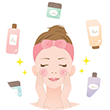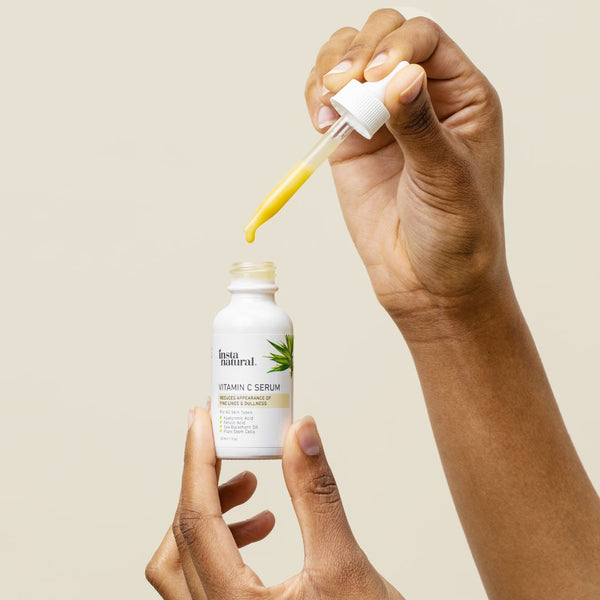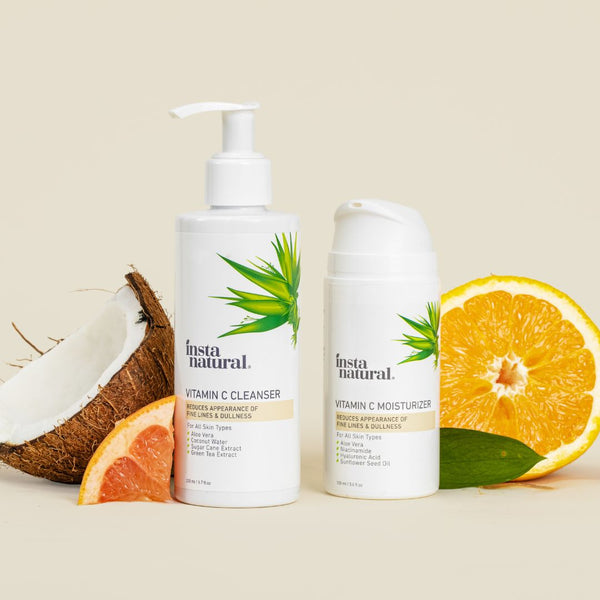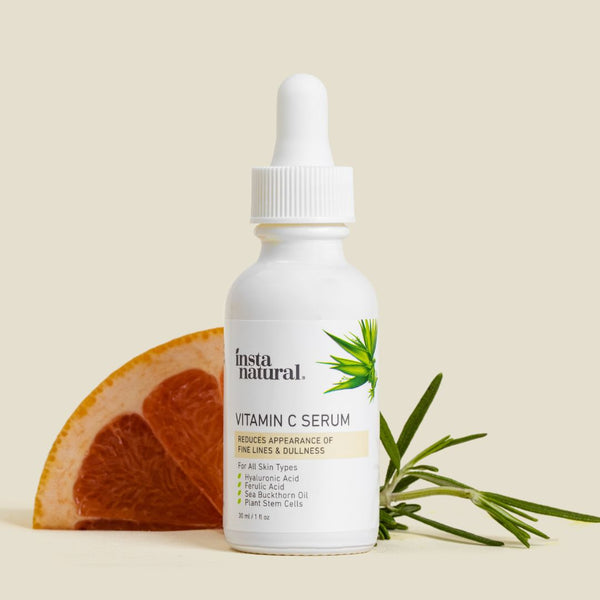
Dry and dehydrated skin are often lumped together in skincare articles. Though dry skin and dehydrated skin may share some characteristics, these are two very different issues. They stem from separate causes and should be treated differently.
If you're suffering from uncomfortable skin but don't know the difference between dryness and dehydration, it's time to get to the bottom of the issue. Treating your skin with the wrong products can actually make the problem worse. Learn more about what you're dealing with and what you should do with this in-depth look at dry skin, dehydrated skin, and the vast differences between the two.
Determining Your Skin Type
When it comes to dryness, there are four major skin types: normal, oily, dry, and combination. Dry skin isn't a condition caused by outside factors, but rather an inherent part of your genetic makeup. While there are things you can do to minimize the effects of dry skin, it's not something you can cure. The first step to determining whether you're battling dry or dehydrated skin is figuring out what skin type you have.
If you have normal skin, you enjoy an even complexion, minimal imperfections, and no serious sensitivities. Your pores are barely visible and your skin is naturally radiant with minimal product use. Lucky you!
Those with oily skin tend to have enlarged pores that produce an excess of sebum, which is an oily substance naturally secreted by the skin. Blackheads, blemishes, and pimples are a common complaint for you. Heat, humidity, and stress can all exacerbate the problem, causing your face to become oilier than usual.
Dry skin is the exact opposite. This skin type is characterized by a dull, rough complexion. Though pores are nearly invisible, lines do show up, and with greater frequency and depth. Dry skin is prone to red patches and may crack, peel, or itch. If your skin type is naturally dry, you will experience these conditions fairly consistently on all parts of your body.
Combination skin has some characteristics of both dry and oily skin. The most common type of combination skin features an oily T-zone across the forehead and down the nose and chin, with dry patches on the cheeks. Combination skin requires a very careful regimen which includes a combination of products to help balance the skin.
If your skin type is naturally dry, you'll experience dryness in all conditions. However, if you identify more closely with normal, oily, or combination skin, yet find that you're dealing with occasional dryness in certain areas or under particular conditions, dehydration could be to blame.
Diagnosing Dehydrated Skin
When skin is dehydrated, it lacks adequate water content. It can be difficult to properly diagnose dehydrated skin because it can be present either with symptoms of dry skin, or symptoms of excessive oiliness. When the skin becomes severely dehydrated, your body attempts to compensate for the condition by producing excess oil. This may lead to an oily appearance and breakouts. If your skin hasn't ramped up its oil production yet, it may simply feel dry and irritated.
The most important thing to note is that your skin is behaving abnormally. Examine your skin closely for unusual wrinkles or a sagging appearance. These are telltale signs of dehydration. Hydrated skin is plump and bounces back readily when touched, exhibiting good elasticity. When you touch dehydrated skin, you'll often see fine lines and notice that the skin takes longer to regain its shape. Dehydrated skin will also feel tight and have a dull appearance.
Water vs. Oil
The question of whether your skin is dry or dehydrated comes down to oil versus water. Dry skin lacks natural oil. Perfectly balanced skin maintains a light hydrolipid film over its surface. This is comprised of oil, moisture, and perspiration. It's ideal for your skin to maintain this thin protective layer. While many people have naturally dry skin, others create it with poor skin care routines. Stripping your skin unnecessarily of a healthy amount of oil can result in uncomfortable dryness where the face would otherwise be healthy.
Dehydrated skin, on the other hand, lacks water. Dehydration starts from within. Your skin is the very last part of your body to receive hydration, so it's the most likely to exhibit signs of dehydration, even when other parts of your body are functioning normally. If your skin is dry, you can treat it with oil, but if it's dehydrated, you need to supply it with water. Go ahead and increase your water intake as a first line of defense, but prepare to battle dehydrated skin from the outside as well.
Skin Stripping Products
While dry skin is a natural characteristic of your body, it can also be caused or exacerbated by certain products. If you're using any of the following, you're actively drying out your skin. Use of these products will disrupt the natural skin barrier which can cause the skin to lose hydration and moisture, even in oily skin types.
Steer clear of products that will dry out your skin:
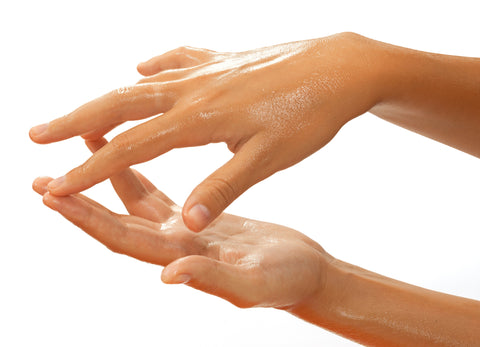
- Bar soaps
- Cleansing products with harsh sulfates or surfactants
- Products with alcohol
- Abrasive scrubs
- Loofahs
- Fragrances
Dry Skin and Diet
If you thought dry skin could only be caused by elements outside the body, think again. What you put in your body can have as much of an impact as what you put on it. Caffeine and alcohol are chief offenders, exacerbating dry skin. When it comes to combating dry skin, remember that this condition is about oil rather than water. The foods that are best for the skin often fall into the oily category and include avocados, salmon, coconut oil, and extra virgin olive oil.
When Weather Dries Your Skin
Dry and dehydrated skin is usually more noticeable in winter when there's less humidity in the air. Dryness and dehydration can go hand in hand in harsh elements. Brisk winds and a persistent chill often lead to itchy, cracked, and flaking skin. However, you can also experience dry skin in the summer as a result of excessive sun exposure. This is why ski weekends wreak such havoc on your face. The combination of sun and cold packs a one-two punch that it's difficult to fight.
Applying sunscreen is the best thing you can do to protect your skin from the elements. This is true not only of dry skin, but of all skin types. Apply sunscreen every two hours regardless of the season. Sunlight is just as harmful in winter, even if the bitter temperatures lead you to think otherwise.
Though a hot shower may seem like the perfect antidote for dry or dehydrated skin, the opposite is actually true. Excessively hot showers will just dry out your skin more. Hopping into that blissfully boiling water after a long walk in the snow spells disaster for dry skin. Instead, stick to a warm shower or bath that will help your skin retain its natural oils.
Hydrate vs. Moisture
Now that you have a better understanding of the difference between dry and dehydrated skin, it's time to tackle the finer points of hydrating or moisturizing it. Dry skin needs a moisturizer. This is a topical product that helps your skin retain its natural oils by preventing moisture loss.
Moisturizers use emollients to soften the skin and help create a protective layer on top that keeps healthy moisture in place. Common emollients that are effective at repairing your skin's healthy barrier include:
- Sweet Almond Oil
- Safflower Oil
- Jojoba Oil
- Argan Oil
- Grape Seed Oil
- Apricot Oil
- Shea Butter
- Cocoa Butter
Hydrating products actually add missing hydration to the skin. These are what you're looking for if you have dehydrated skin. Hydrating products use humectants that attract water molecules to the skin and plump it up from the inside out. Common humectants include:
- Hyaluronic Acid
- Sodium PCA
- Aloe Vera
- Glycerin
- Sorbitol
- Lactic Acid
- Colloidal Oatmeal
Most products contain a blend of emollients and humectants. The concentration of each will determine its effectiveness as a moisturizer, hydration product, or both.
Lotions, Creams, and Serums

Now you're ready to start building your skincare collection with your personalized blend of hydrating and moisturizing products. Once you hit the shelves, you'll notice a dizzying array of options including lotions, serums, and creams. What's the difference?
Lotions are a blend of emollient and humectant ingredients. They have a lower percentage of emollients and a higher concentration of humectants. They're effective for both hydrating and moisturizing but lean more towards hydration. Creams are thicker with a higher concentration of emollients. If your skin is dry and you're looking to replenish its oil content, a cream is the way to go.
Serums are liquid concentrates that are ideal for all skin types, but geared towards treating a specific skin condition. Both dry and dehydrated skin can benefit from serums with Hyaluronic Acid and Vitamin C, as both ingredients help replenish the skin and help maintain adequate moisture and hydration levels.
Layering Your Products
Once you've amassed the right selection of products, it's time to put them to work. With so many pieces of the puzzle to assemble, it's not easy to know where to start. Applying products in the wrong order can decrease their effectiveness, so it's important to develop a smart strategy for application.
The first thing you need to address is hydration. If you believe that your skin isn't properly hydrated, you should focus your efforts on remedying the problem. Remember that dehydration is a condition that you can cure with the right treatment. Using the right products may banish dehydration, so you can scale back your efforts later and eliminate this step once your skin is plump and supple once again.
Begin with a lightweight hydrating toner. A gentle alcohol-free mist is ideal with this skincare regimen. Next, apply a hydrating serum with a star humectant from the previous list. If you're battling severe dryness, incorporate a face oil into your routine at this stage. While the toner and serum will hydrate your skin, this step will address the problem of dryness, replenishing some of the oils your skin has lost or simply didn't produce.
Your moisturizer of choice is the final step in this skincare process. Moisturizers lock in the hydration and oil that's already present, so it's crucial that you add these elements first. A good moisturizer creates a barrier on your skin. While this is great for locking in beneficial products, it will also reduce the effectiveness of anything you apply on top of it.
Once you've lined your products up in order, take your time with the application. Give your skin time to absorb each layer before you move on to the next so you can enjoy the maximum benefits of every product.
Daily Routines for Dry Skin
If your skin isn't battling a bout of dehydration, you can pare down your daily routine to just a few products. When dry skin is your natural state, it's something you should treat regularly. Adjust your bathroom routine so you're spending no more than 10 minutes in the shower. Set the water to warm, not hot. Use a light fragrance-free liquid body wash to avoid drying out your skin. When you step out, pat your skin dry lightly, but don't rub.
You won't always need a hydrating serum, but you should always use a moisturizer twice a day. Look for a hydrating cream with a humectant to keep dehydration at bay and lock essential moisture in. Cleanse your face with a fragrance and alcohol-free cleanser. A product with a moisturizing agent like shea butter is ideal. Gently pat excess water from your face, then apply your moisturizer after cleansing while the skin is still slightly damp.
Understanding the difference between dryness and dehydration will help you select the right products and skin care routine for any situation. Don't let dehydrated skin go untreated, trusting that a moisturizer will do the job. Delve a little deeper and restore your skin's water content so you can enjoy a dewy and youthful look. Once your skin is well hydrated, managing dryness becomes much easier, and you'll find a flawless glow more attainable than ever.
